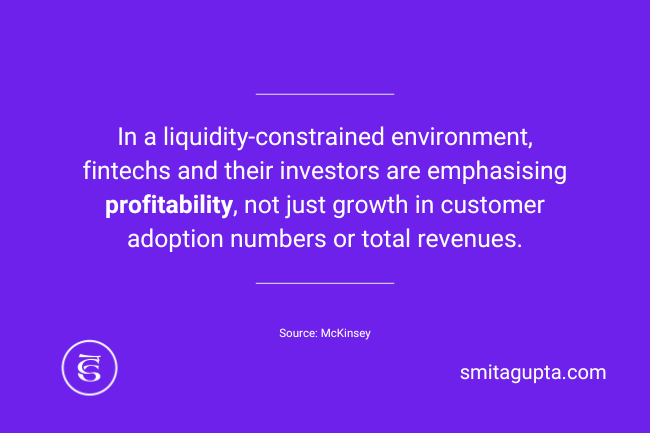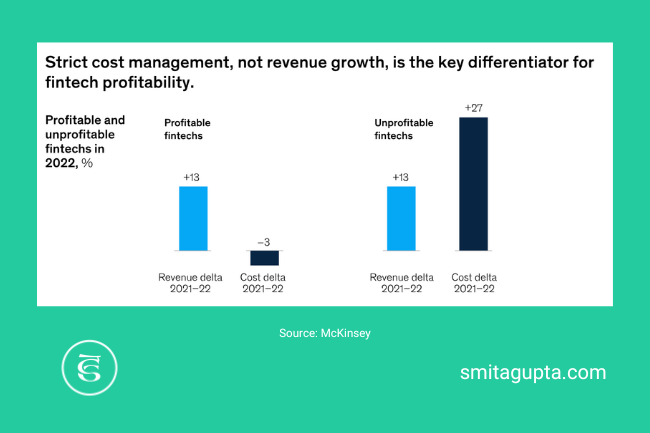As CEO of a fast-growing fintech company, what I’m going to share next will resonate with you.
With the uncertain macro-economic and socio-political environment, you need to think about new models of value creation that will be sustained and relevant growth.
Having read McKinsey’s report, Fintechs: A New Paradigm of Growth, it struck me how the mentality of fintech companies has changed. The shift from building the latest cutting-edge tech and waiting for customers to come, to gradually building a product based on market fit, fintechs are taking their time to grow.
Fintech investment has been up and down in the last few years. 2021 saw an unprecedented spike in fintech investment with 177% YOY growth, before dropping back down in 2022.
The time between investment rounds has increased and the amount per round has decreased, meaning fintechs are adapting their business models to be sustainable and not rely on external funds.

These four core aspects of sustainable growth models implemented by public companies can be applied by other fintechs.
Cost Discipline
Cost management is more important than revenue growth when it comes to building a profitable business. Rather than innovating for innovation’s sake, fintechs need to determine the right product market fit to ensure any spending will result in viable returns.
Businesses should also take a more holistic approach to business economics, such as comparing the customer lifetime value (LTV) to customer acquisition costs (CAC) to understand what the margins for spending are.

Measured Growth
These three steps enable businesses to grow sustainably.
First, they should build a strong core product or service within their home market. Going ‘back to basics’ mean businesses are 1.6 times more likely to generate competitive returns.
Second, businesses can expand into adjacent geographies or industries, once it makes sense to do so. This is no longer a ‘must-do’ though.
Finally, there’s the ‘shrink to grow’ plan. Rather than stick in markets that aren’t working, fintechs should reinvest in high-performing areas.
As fintechs can no longer grow at any expense, building a steady and measured growth model helps ensure the foundations are in place before building up and out.
Programmatic M&A
New products, features and revenue streams are sometimes easier to buy than build. M&As increase and have better returns during times of economic uncertainty, but, of course, are not always successful.
Keeping the fintech culture alive
The main differentiators between fintechs and incumbents are fintechs’ agility, lack of legacy technology slowing them down, and innovation in tech and customer experience. As incumbents take steps to catch up, it is important fintechs maintain their competitive advantage and incentivise the team through shares.
These principles for sustainable growth have been seen in some of the biggest global companies. As the fintech industry implements agile operating models to prepare for technological advances and economic uncertainty, sustainable growth will be important to keep up with the market and stay afloat.
Get in touch if you’re looking for a growth advisor to support you on your journey!
